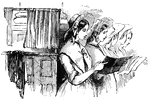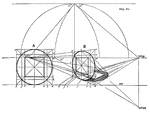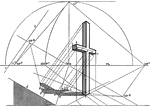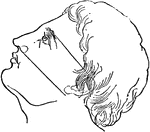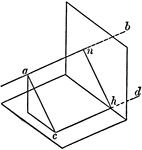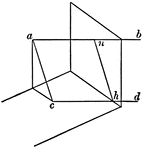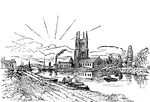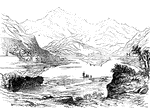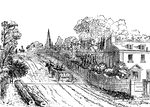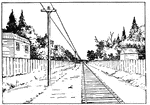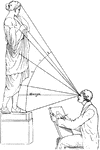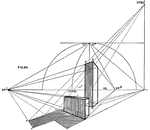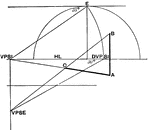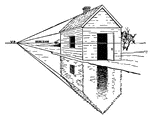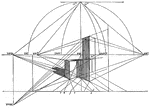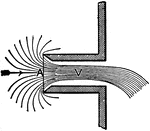Perspective Drawing
The Perspective Drawing ClipArt gallery offers 53 illustrations of methods and objects used in perspective drawing. This includes finding horizon lines, drawing parallel lines, and drawing to a vanishing point.

Accidental Point
"That point in which a right line drawn from the eye parallel to another given right line cuts the picture…
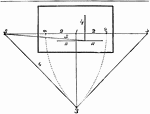
Angular Perspective
This figure comprises the whole of the points and lines preparatory to beginning a drawing in "angular…

Angular Perspective
The perspective in this plate is "angular perspective," and the figure it represents is a flat square…

Angular Perspective
This object is a cube, having therefore all its faces of equal dimensions; and as both sides recede,…

Angular Perspective
This cube has four additional cubes of equal dimensions. This is effected by first drawing the cube…

Angular Perspective
This figure differs from the others because they are solid cubes. Further, the geometrical scale is…
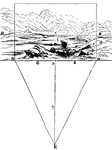
Distance
"A landscape is supposed to be viewed from the spot marked E; and that the spectator is desirous of…

Drawing House Forms
A, B, and C show three types of triangular prisms: right, isosceles, and equilateral. When put together…
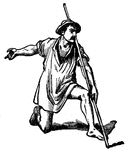
Foreshortening
Artistic technique in which the object is shortened in proportion to its approach to the perpendicular…

Horizontal Line Diagram
In this figure BB is the base line; HH the common horizontal or vanishing line; C…

Vanishing Point Using Lines
An exercise problem to create a vanishing point using lines. The line is drawn by placing a dot into…

Parallel Perspective
This figure represents the whole of the points and lines requisite for working out a drawing in "parallel…
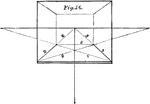
Parallel Perspective
The perspective shown in this plate is parallel perspective; and the subject here intended to be represented…
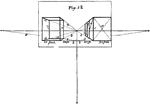
Parallel Perspective
Two upright oblong figures are here represented in parallel perspective. They may be imagined to resemble…
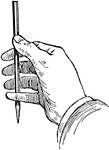
Estimating Lines using Pencil
"Holding the pencil in a plane perpendicular to the line of sight, marking with the thumb the length…

Perspective Outline of Object
An illustration of perspective drawing using a picture plane to create a vanishing points of the image.

Angular Perspective
A series of illustration of the image showing the different perspectives showing vanishing points and…
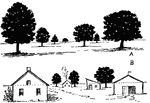
Landscape Perspective
"Perspective- Place roofs and tree tops above the horizon line, and the tree trunks and main part of…

Parallel Perspective
"An object in parallel perspective with one face in the picture plane is shown. At B is shown the top…

Positioning
"Observe: That when drawn above the level of the eye, the bottom faces can be seen. (Boxes H, C and…

Vanishing Point
A vanishing point is a point in a perspective drawing to which parallel lines appear to converge.

Vanishing Point
A vanishing point is a point in a perspective drawing to which parallel lines appear to converge.

Vanishing Point
A vanishing point is a point in a perspective drawing to which parallel lines appear to converge.

Vertical Line
That an accurate notion of the vertical line may be obtained, the plane of the picture must be supposed…



